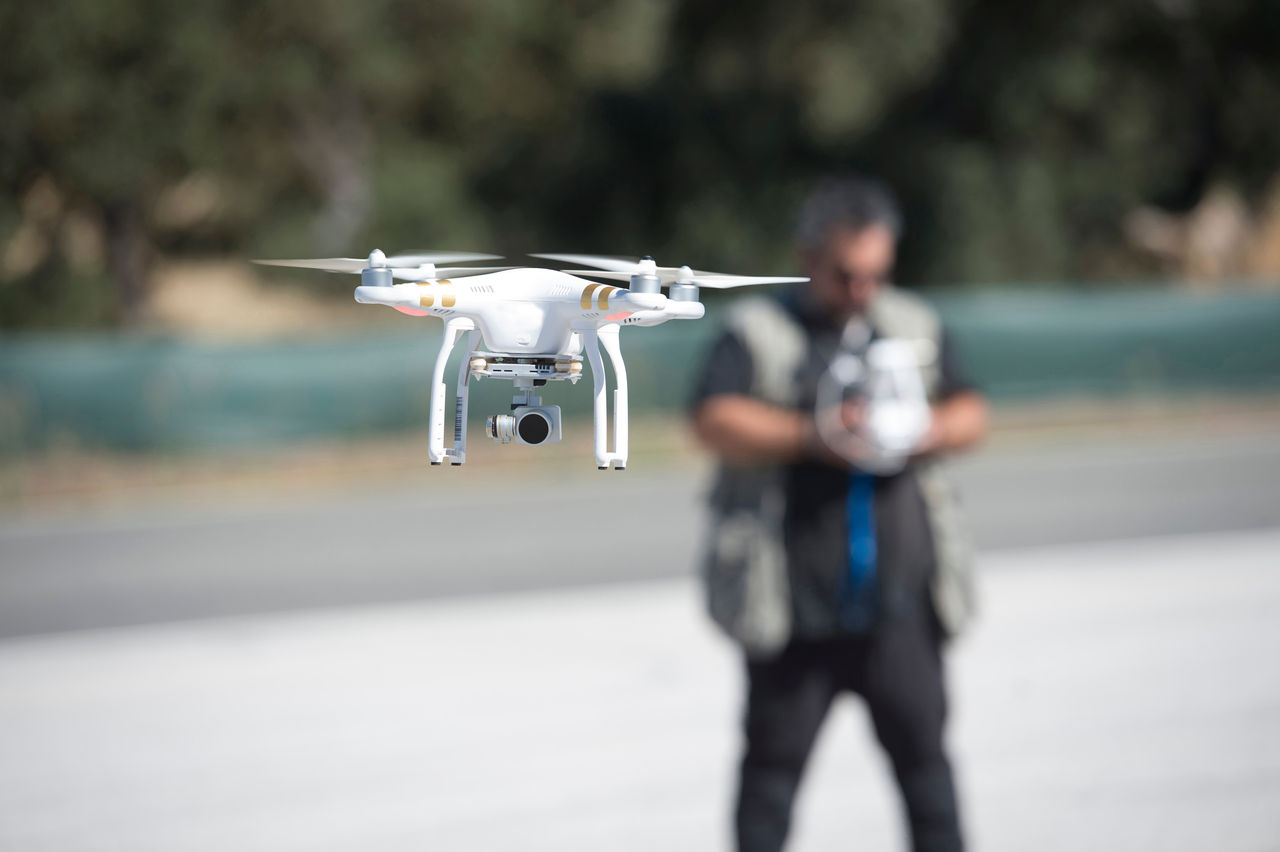Operating your UAS
Recreational use
Recreational users are asked to follow the FAA's basic guidelines for flight safety.
- Do not operate your drone in a dangerous manner.
- Take The Recreational UAS Safety Test and carry proof of test passage.
- No heavier than 55 pounds (unless certified).
- Always keep the drone within eyesight.
- Give way to and do not interfere with manned aircraft.
- Obtain authorization before flying in controlled airspace.
- Do not fly higher than 400 feet.
- Do not fly over people or moving vehicles.
- Do not interfere with emergency response activities.
- Comply with No Drone Zone locations.
- As a courtesy, coordinate with airports when operating within one mile of the airport.
- Have a current registration mark on your drones showing the registration number, and carry proof of registration with you.
Commercial use
Commercial operators must comply with 14 Code of Federal Regulations Part 107 for pilot certification and operating limitations. Unless waived by the FAA, the following limitations apply:
- Be at least 16 years of age or older.
- Obtain remote pilot certification by passing an aeronautical knowledge test.
- Always keep the drone within eyesight.
- Give way to and do not interfere with manned aircraft.
- Do not fly within controlled airspace without prior coordination.
- Do not fly higher than 400 feet.
- Do not fly over people unless the activity meets the requirements of Part 107.39.
- Do not fly over moving vehicles unless the activity can meet the requirements of Part 107.145.
- Do not interfere with emergency response activities.
- Comply with No Drone Zone locations.
- Do not fly at night without obtaining night training as per Part 107.29 and assuring the drone has appropriate anti-collision lighting.
- Comply with weather minimums.
- As a courtesy, coordinate with airports when operating within one mile of the airport.
Pennsylvania UAS Laws
Please note that Pennsylvania UAS Law makes it a crime to operate a drone:
- to conduct surveillance of another person in a private place.
- in a fashion that places another person in fear of bodily injury.
- to deliver, provide, transmit, or furnish contraband.
About "No Drone" Zones
To help UAS operators understand where they can and cannot operate their UAS, the FAA has developed the B4UFly smartphone app that identifies whether there are any restrictions or requirements in effect at the location where you want to fly.
For state and local authorities, the FAA has numerous tools available online to help public safety officials understand safe drone operations and their authority.
For more information and news on UAS operation and registration, go to the FAA's Unmanned Aircraft Systems page.



